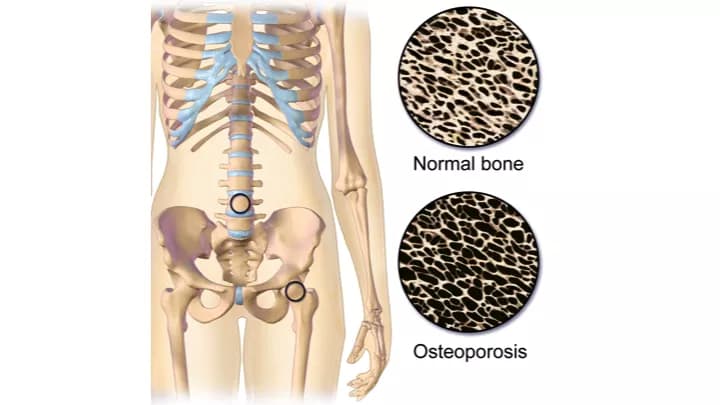
'Roadmap' To Aid Osteoporosis Treatment Development
Using advanced mass spectrometry technology, scientists from the Florida campus of The Scripps Research Institute (TSRI) have developed a molecular model that may provide a new framework for improving the design of osteoporosis treatments.
"Because of our aging population, these kinds of therapeutics are in great demand," said study leader Patrick R. Griffin, co-chair of the TSRI Department of Molecular Medicine. The research was published today in the journal Nature Communications.
Using a technology known as HDX, which the Griffin lab has propelled into mainstream protein analysis, the scientists delivered the first dynamic snapshots of a prime target for osteoporosis treatments: a receptor that regulates calcium levels to maintain healthy bones.
The use of current drugs that target this receptor -- called vitamin D receptor agonists -- is limited because use can result in hypercalcemia, a condition that can weaken bones and even cause kidney stones, due to too much calcium in the bloodstream.
To address this problem, scientists need a clearer picture of the structure of the vitamin D receptor. The vitamin D receptor complex regulates bone mineralization by controlling a gene known as BGLAP that is the target of 1?, 25-dihydroxyvitamin D3 (1,25D3), the active hormonal version of vitamin D. Unfortunately, increased levels of 1,25D3 also activate a calcium-regulating gene called TRPV6, which leads to hypercalcemia.
Griffin and his colleagues hope to eliminate this threat by developing 1,25D3 analogs (known as dissociated vitamin D receptor ligands or VDRMs) that differentially target BGLAP genes, while avoiding TRPV6.
"The idea is that if we could fingerprint how these various ligands interact with the vitamin D receptor, we could provide a kind of roadmap to help develop those that only trigger the non-hypercalcemia gene," Griffin said.
Until now, developing more selective compounds has been hampered by the fact that no one understood the structural mechanism that makes them work.
"This study shows it's possible to develop a drug that can alter certain aspects of the complex to avoid problematic activation of TRPV6 -- and the study points to novel ways to design potential therapeutics to treat osteoporosis safely and more effectively," Griffin noted.
Griffin and his colleagues performed a detailed comparative biophysical study on hundreds of compounds, all with distinct chemical structures.
"Our results provide snapshots of distinct conformational ensembles of the receptor, which allows it to adopt different orientations depending on compound structure, DNA and co-activator binding," said TSRI Research Associate Jie Zheng, the first author of the study. "This study shows the molecular mechanism of a selective vitamin D receptor modulator versus agonists and how they drive different interactions with co-regulators when associated with sequence-specific DNAs."
The scientists used hydrogen-deuterium exchange (HDX) mass spectrometry, a high-precision, high-sensitivity mapping technique that has proven to be a robust method to probe protein conformational or shape changing dynamics within the context of ligand and protein/protein interactions.
HDX can show the specific regions of the protein complex that are altered on interaction with specific ligands, in this case the vitamin D receptor complex, information which can be used to infer structural changes that are the result of a specific interaction.
Materials provided by Scripps Research Institute. Note: Content may be edited for style and length.
Disclaimer: DoveMed is not responsible for the accuracy of the adapted version of news releases posted to DoveMed by contributing universities and institutions.
References:
Jie Zheng, Mi Ra Chang, Ryan E. Stites, Yong Wang, John B. Bruning, Bruce D. Pascal, Scott J. Novick, Ruben D. Garcia-Ordonez, Keith R. Stayrook, Michael J. Chalmers, Jeffrey A. Dodge, Patrick R. Griffin. (2017). HDX reveals the conformational dynamics of DNA sequence specific VDR co-activator interactions. Nature Communications. DOI: 10.1038/s41467-017-00978-7
Related Articles
Test Your Knowledge
Asked by users
Related Centers
Related Specialties
Related Physicians
Related Procedures
Related Resources
Join DoveHubs
and connect with fellow professionals

0 Comments
Please log in to post a comment.